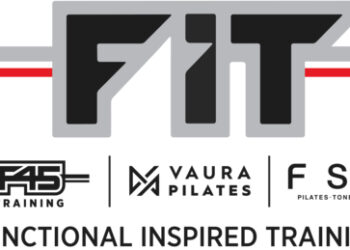
Mitch Batkin, the SVP of fitness for Sport&Health, has recognized how broken equipment can lead to disgruntled members. Which is why he, his maintenance head and a team of six staff members, work as quickly as possible to fix any issues that may arise. “We don’t want the members to find the problem first,” said Batkin.
Unfortunately, this task can be tricky. After all, many members who notice a piece of equipment is broken just move over to the next one — they don’t always notify staff. As a result, Batkin encourages staff to walk the floor as much as possible, looking at screens and keeping an eye on member behavior. “There should be multiple times a day where the manager walks through and looks at the screen to see if the normal screen is up,” explained Batkin. “If you watch, certainly during prime time, you can find out very quickly if everything is working.”
According to Chris Richter, the facilities director for Gainesville Health and Fitness (GHF), as managers walk the floor, they should also keep an eye out for misuse. “The most common type of equipment issue is due to misuse,” he said. “We have all seen the videos of people misusing equipment, sometimes in a hilarious fashion, and that usually leads to damage. We try to prevent these issues by educating members on how to properly use all of our equipment.”
When management is made aware that a piece of equipment is broken, the issue should be resolved as quickly as possible. Having a team of maintenance staff at your disposal can be helpful in this endeavor. Like Sport&Health, GHF has a team of six employees under Richter, who work to fix equipment and on preventative maintenance. As a result, equipment is usually fixed at GHF within three days (unless it’s a more serious issue). However, it’s helpful for maintenance staff to have an inventory of commonly broken products on hand, such as motors or cables, so they don’t have to wait for the deliver of needed items.
At both Sport&Health and GHF, the maintenance teams do more than just fix broken pieces of equipment. They also do preventative maintenance, which is extremely important to prolonging your equipment’s lifespan. “Our maintenance team doesn’t just fix what’s broken when they’re at our clubs,” said Batkin. “They go around and test equipment for problems — you get ahead of issues that way.” This also helps prevent members from finding problems, before you do.
In addition, having a maintenance head, or someone in charge of preventative maintenance and fixes can be extremely helpful. “With the added value on people’s time and money these days, clubs owe it to their members to provide as much functional equipment as possible,” said Richter. “I look at it like every piece of equipment is one of our members’ favorite pieces, and their workout would not be the same or even exist without it. This pushes me and my team for quicker turnover times and a sense of purpose in getting things fixed as quickly as possible.”
As a final piece of advice, Richter added, “At the end of the day, it’s not rocket science. Have a dedicated team with a cursory knowledge of the facility and machines. Have an inventory of tools and parts that will allow you to address issues effectively and efficiently. Build relationships with your vendors in order to ensure that the equipment is cared for properly. Use preventative maintenance techniques outlined by manufacturers in order to save you time and money in the end.”
By Rachel Zabonick
Stay ahead in the fitness industry with exclusive updates!
Rachel Zabonick-Chonko is the editor-in-chief of Club Solutions Magazine. She can be reached at rachel@peakemedia.com.











